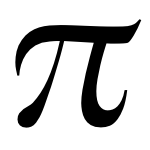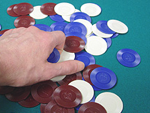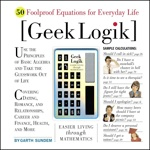 As the new look takes hold, new functionality starts taking hold, as well. In an effort to make the blog not only look better, but function better too, I've continued upgrading this site.
As the new look takes hold, new functionality starts taking hold, as well. In an effort to make the blog not only look better, but function better too, I've continued upgrading this site.
First, the Knight's Tour Game is working again. When I moved the blog over, I initially neglected to move the Knight's Tour graphics (the squares, the pieces and the other icons) over with them at the same time. That error has been corrected, and the game now looks and works as it should.
Also, the Timed Quiz Generator hasn't been functioning at all. I've not only fixed the problems so that the Timed Quiz Generator now works properly, but I've updated the video with the new address, and added a button to display the video tutorial on the site itself.
I apologize for these flubs, and any inconvenience they caused.
I've added a nice new feature to this blog's most popular post, How Many Xs Can You Name In Y Minutes?. It's called the droplist filter, and it allows you to narrow down the long categorical quiz lists to better suit your interests. To activate it, simply click on the magnifying glass icon ( ) next to any category, type in a word relating to that category and your specific interests, and hit return. After you do that, the droplist will contain only items containing your search term.
) next to any category, type in a word relating to that category and your specific interests, and hit return. After you do that, the droplist will contain only items containing your search term.
For example, if you're looking for baseball-specific quizzes, you would click on the magnifying glass icon next to the SPORTS category, type baseball into the text field, and hit return. Let's say you decide that there's too few quizzes on baseball (only 8 at this writing), and that you want more. You could click the icon again, typing in MLB (short for Major League Baseball), and find many more!
Note that this isn't perfect. Neither of the above examples will include the quiz titled 1976 Cincinnati Reds Starting Players, as that doesn't include the terms baseball or MLB in it. The droplist filter looks only for the exact term you enter, so Cincinnati Reds would bring that quiz up, while Cincinnati Starting would not bring that quiz up (as the words Cincinnati Starting don't appear together in the name of any quiz).
The feature is nonetheless quite handy. Since each quiz lists the site that hosts it, this makes it easy to find, say, only MOVIES & TV quizzes that appear on Mental Floss. Click the magnifying glass icon next to MOVIES & TV, type in Mental Floss, hit return, and the droplist will now only contain quizzes from Mental Floss.
To return to the full list, click the icon again, then click the reset icon ( ), and the droplist will immediately return to its full contents. Keep in mind that visiting a quiz, and then returning to the timed quiz page will also reset the droplist to its full contents.
), and the droplist will immediately return to its full contents. Keep in mind that visiting a quiz, and then returning to the timed quiz page will also reset the droplist to its full contents.
Besides the Knight's Tour I mentioned earlier, I've also reworked all the other challenges listed under Tests on the workout page of the Mental Gym. While the Knight's Tour itself still uses your browser's built-in dialog boxes, the others have all been reworked to use newer and more customizable dialog boxes.
One of the benefits of this can be immediately seen in the new version of the Mental Shopper Quiz. Since it's always going to be asking for a 4-digit price (2 digits for the dollar amount and 2 digits for the cent amount), it's a simple matter to have the input be pre-formatted in the form of a price (you'll also note that the input doesn't respond to any input other than numbers, as well). This feature is also used in the new Serial Number Quiz and the new Pi Digits Quiz, where it especially helps in answering the 40-digit challenges.
Since the Root Extraction Quiz and the Exponential Expression Quiz both require such a wide variety of input, their inputs aren't limited in this way. One good thing about using the new windows for these, though, is that when asking about exponential expressions, I can actually ask a question in a form such as, “What is 98?”, instead of asking “What is 9^8?”, and subsequently having to explain that the ^ symbol is meant to represent “to the power of”.
In the updated version of the Day of the Week For Any Date Quiz, the custom dialogs also make it easier to use droplists for a response. Instead of worrying about whether you misspelled Wednesday in an input, or requiring that you enter it in all small letters or all caps, you simply select it from the droplist and get your response right after clicking the OK button!
The biggest change in all the quizzes is the new Playing Card Memorization Quiz. In the peg word quiz, it acts pretty much as before (although no longer requiring you to enter your answer in all small letters). However, when you click on any of the options to be quizzed on the card pair feat, you might be in for a surprise!
Originally, this quiz just gave you pairs of cards names in a shortened notation (5S for 5 of Spades, or KC for King of Clubs, for example). Now, you see detailed images of playing cards! As the window opens, you'll see 2 playing cards, and you can click View next pair of cards to see another pair (note that you cannot go back and see any previous pairs!). This continues until you've seen as many pairs as you selected, after which you'll briefly see two cards that say QUIZ TIME.
After about 3 seconds, the card window closes, and the quiz window opens automatically. Instead of having to enter the cards in a special notation, the input is now done in the form of a pair of droplists (one for the value and one for the suit), making the input far simpler, while decreasing the potential mistakes. Because this quiz continues until it's asked about every pair, there's also an option to discontinue the quiz at any time.
Most of these updates wouldn't be possible without the awesome power of jQuery and the work of numerous jQuery developers. The new modal windows are made possible via boxy, and the timed quiz droplist filter came from joshuachan.ca. The masked input in the quizzes was made possible by digitalBush.com's Masked Input Plugin. Juggergnost's Regular Cards Clip Art library is the source of the playing card images. All these developers deserve recognition for their help in making this blog simpler and easier to use.

 There are plenty of places you can find Pi easily on this blog, but you might be surprised as to where you can find Pi hidden, if you just look close enough. I'll start with a few of the easier places to find it.
There are plenty of places you can find Pi easily on this blog, but you might be surprised as to where you can find Pi hidden, if you just look close enough. I'll start with a few of the easier places to find it.


 Ready to take your memory and mental math feats to the next level? I'll show you some excellent resources on how to do just this in this month's edition of
Ready to take your memory and mental math feats to the next level? I'll show you some excellent resources on how to do just this in this month's edition of  As the new look takes hold, new functionality starts taking hold, as well. In an effort to make the blog not only look better, but function better too, I've continued upgrading this site.
As the new look takes hold, new functionality starts taking hold, as well. In an effort to make the blog not only look better, but function better too, I've continued upgrading this site. ) next to any category, type in a word relating to that category and your specific interests, and hit return. After you do that, the droplist will contain only items containing your search term.
) next to any category, type in a word relating to that category and your specific interests, and hit return. After you do that, the droplist will contain only items containing your search term. ), and the droplist will immediately return to its full contents. Keep in mind that visiting a quiz, and then returning to the timed quiz page will also reset the droplist to its full contents.
), and the droplist will immediately return to its full contents. Keep in mind that visiting a quiz, and then returning to the timed quiz page will also reset the droplist to its full contents. Having recently covered the topic of gambling and math in
Having recently covered the topic of gambling and math in 


